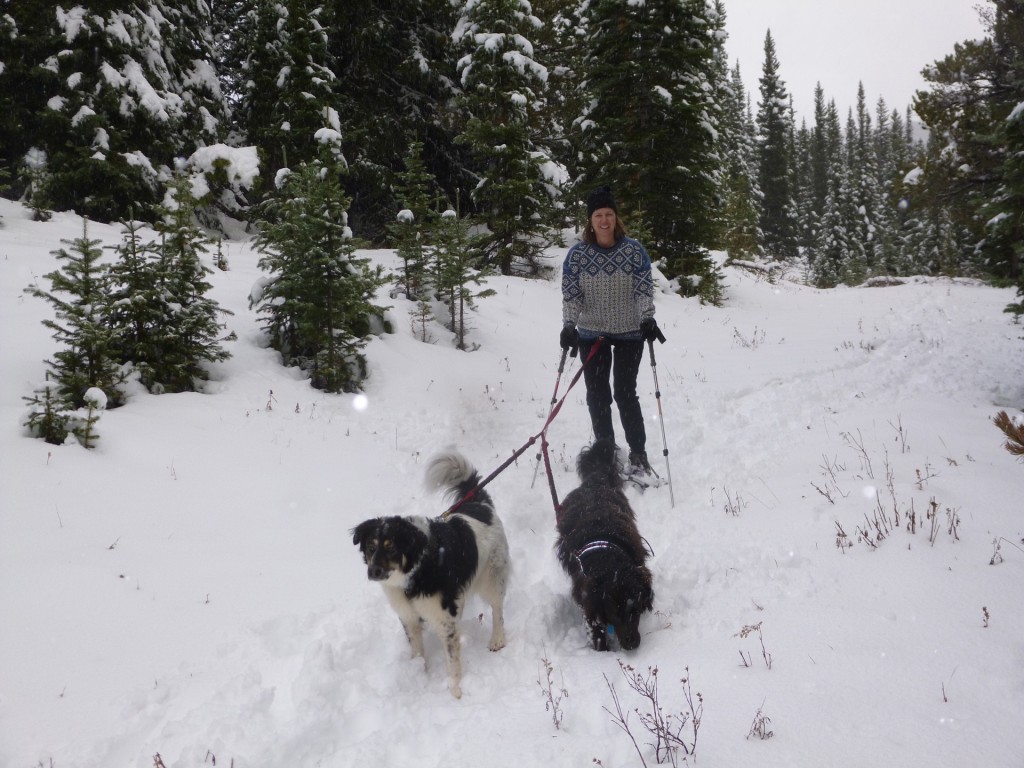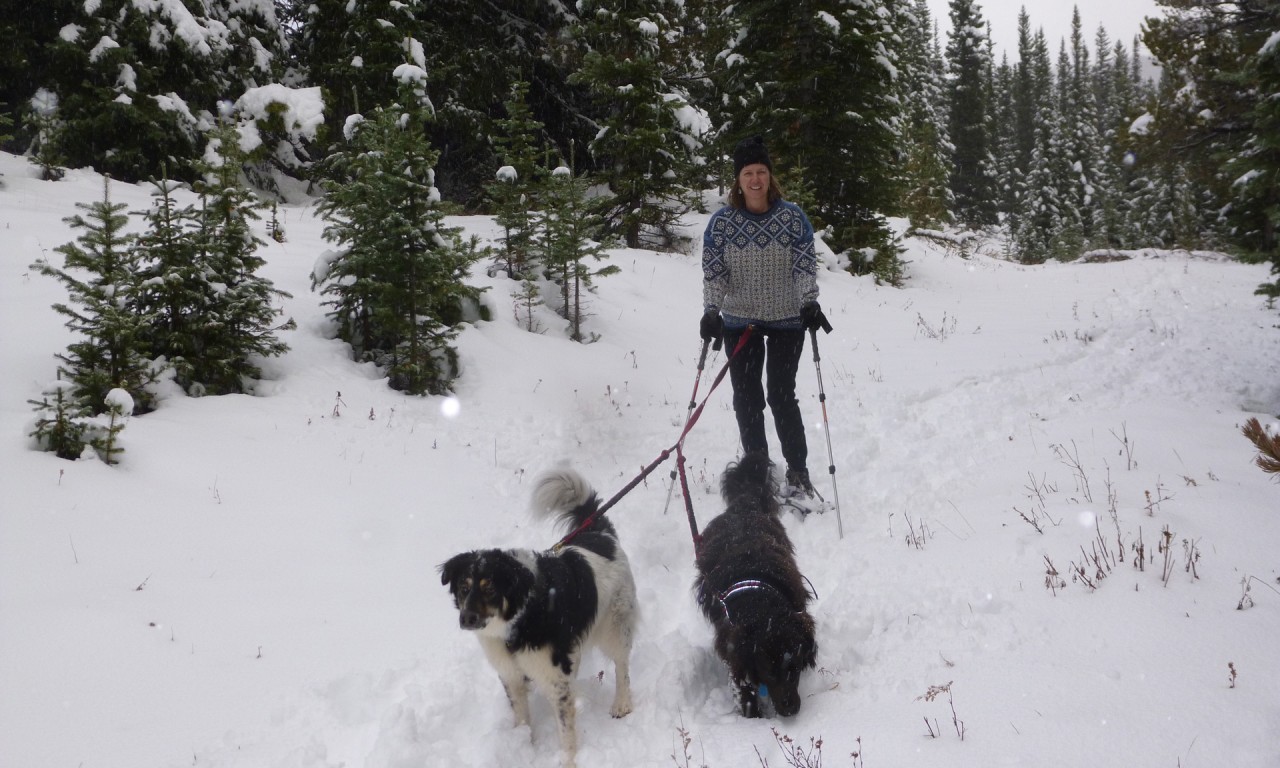One December day four years ago, a monstrous snowstorm hit the Nederland area. Fluffy flakes fell down from the sky like large potato chips, and the snow quickly piled up in the local parks. All told, almost two feet of snow fell over the course of two days, blanketing the ground. If you’re anything like me, it can be daunting to talk yourself into going outside. But our four-legged friends feel differently. Cold temperatures and falling snow seem to energize them, and when we started to collect hats, gloves, scarves, and finally snowshoes, our dogs were jumping up and down at the door like Energizer bunnies.
A Dog’s Idea of Fun
Owning dogs during winter can be a double-edged sword. The last thing you want to do is go outside in the biting wind and cold; the idea of hanging out in your nice cozy living room with a cup of hot cocoa seems much more inviting. But man’s best friend doesn’t feel the same way, and wants nothing more than to go outside and frolic through the fluffy snow. This is especially true of long-haired dogs who find the hot temperatures of summer less than desirable. Just because it’s cold doesn’t take away their strong desire for a nice walk—they need the exercise, and the truth is, so do we.
We decided to head up to Mud Lake Open Space for a snowshoe hike with our retriever and border collie. Snowshoeing can be so magical in our county parks. When you can see animal tracks vividly, and the blankets of snow create a silent beauty, it’s like being in your own private holiday greeting card. Because snowshoeing through the fresh, deep snow can throw me off balance, I like to use trekking poles. All of our county parks require dogs to be on leash, so that can be challenging when trying to cross-country ski or snowshoe with poles. What’s the answer? We have found a skijoring harness to be a wonderful tool to get out in the parks and frolic with our dogs in winter.
Leading the Way
For those of you not familiar with skijoring, it’s a Norwegian winter sport where dogs are hooked up to people on Nordic skis via a tow rope—sort of like a giant bungee cord. Both dogs and owners wear a harness—the dog to allow attachment at the top of his back, and the owner wearing a hip harness on the hips, which is hooked to the cord attached to the dog. The cord is springy so it won’t throw you off your skis or snowshoes as your dog leaps and bounds through the snow. It’s a great way to keep your dog attached to you and safe from wildlife, but still allow them to have fun in the snow.

You don’t have to become a winter skier or snowshoer to enjoy the county parks with your dog during the coldest months of the year. Many of our parks on the plains and along the foothills get plenty of sunshine and little snow, so they are often snow-free even during the winter months. Since I have mountain dogs with very thick fur coats, I very rarely take my dogs to Rabbit Mountain Open Space in summer. But winter can be an ideal time to get out and enjoy the views of Longs Peak while my dogs enjoy walking along the sunny trails of Rabbit Mountain during the cooler temperatures.
So despite the falling temperatures and fast-approaching snow, think of the season as a great opportunity to inspire you and your furry friend to get out and enjoy some fresh air, camaraderie, and exercise, and make some beautiful winter memories in our local parks.


